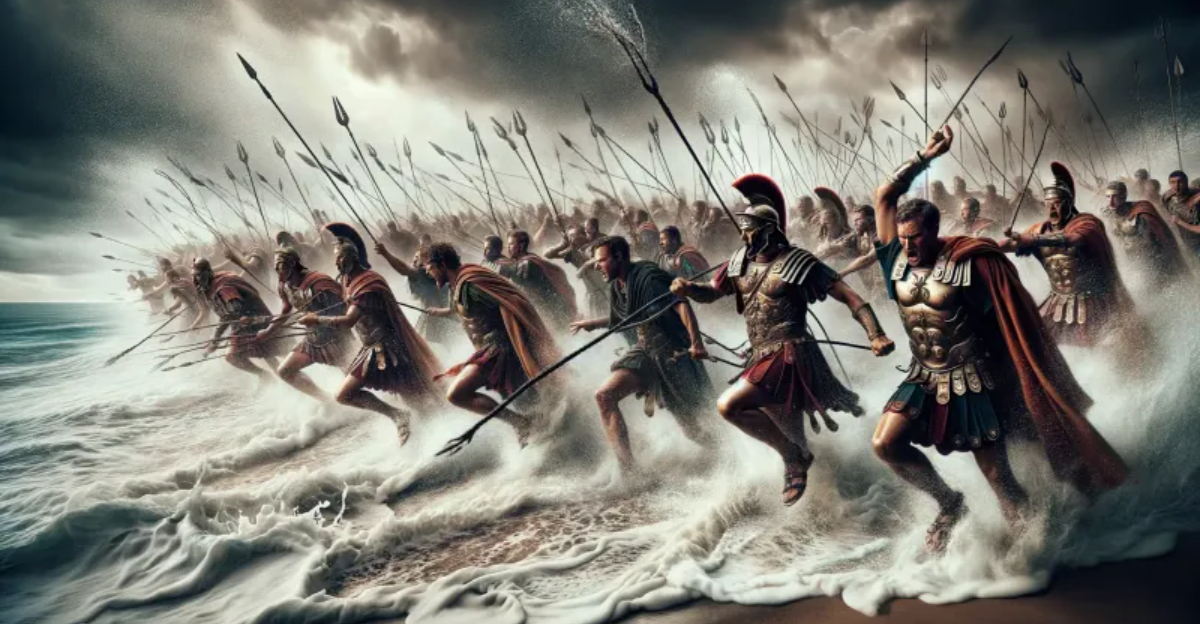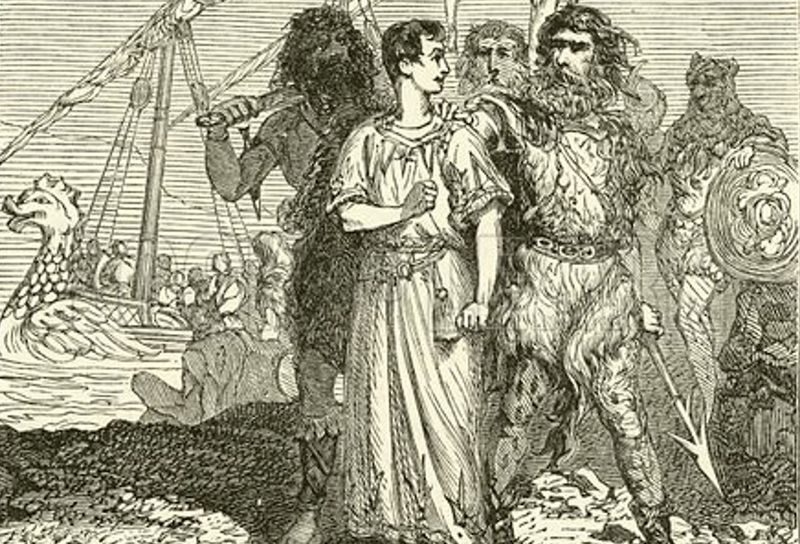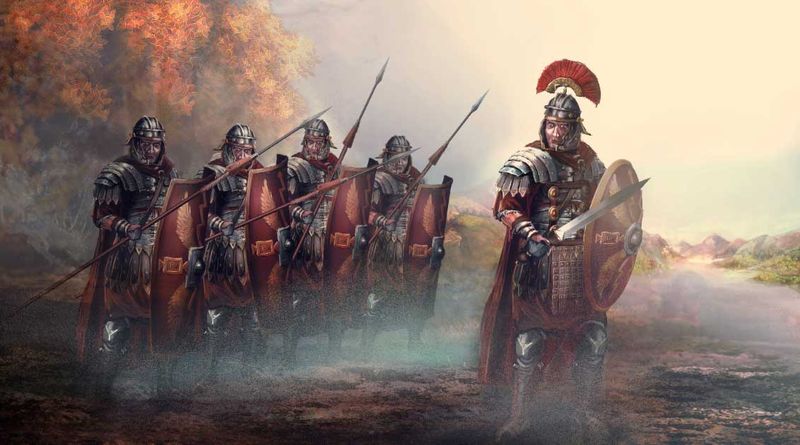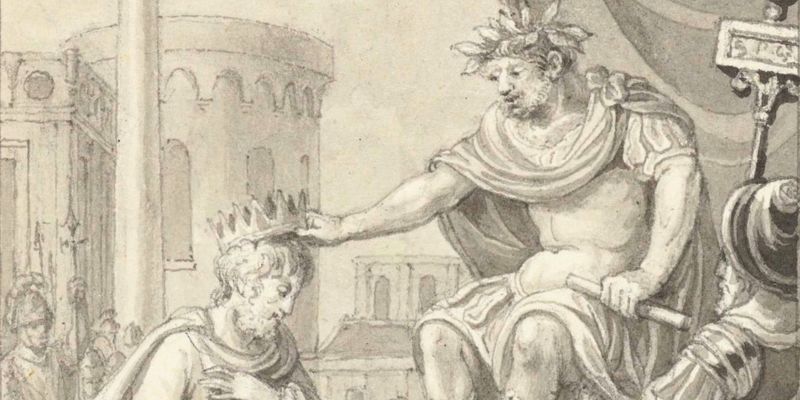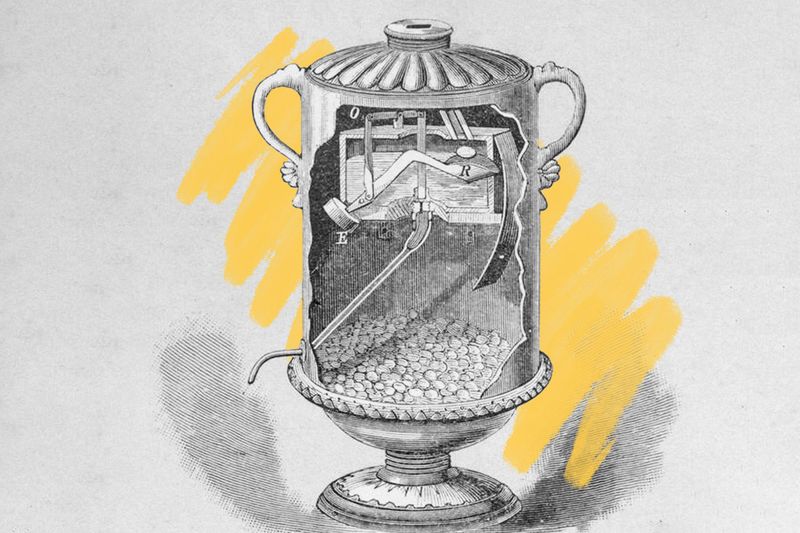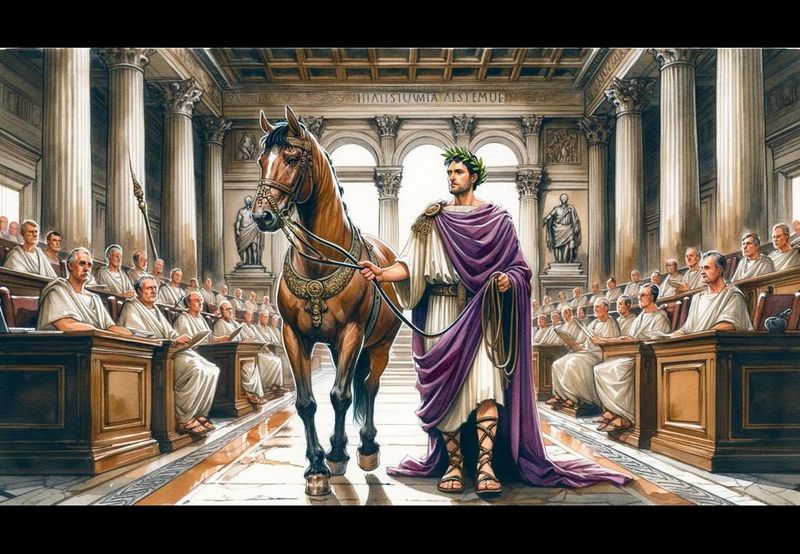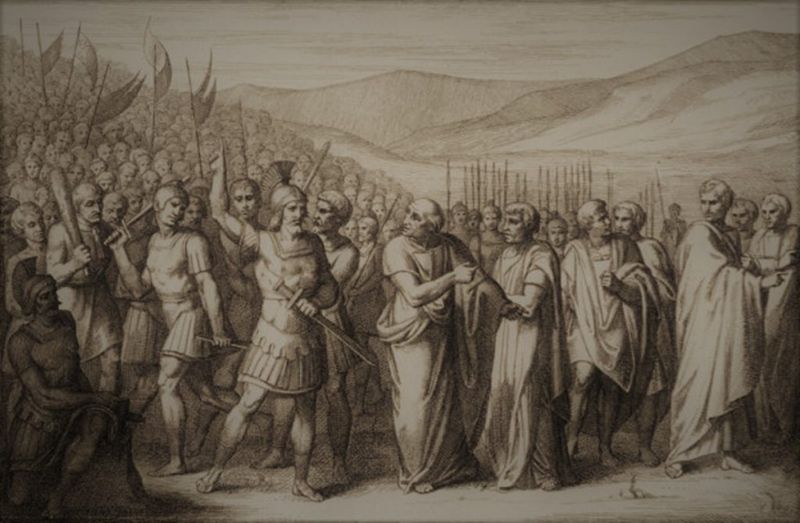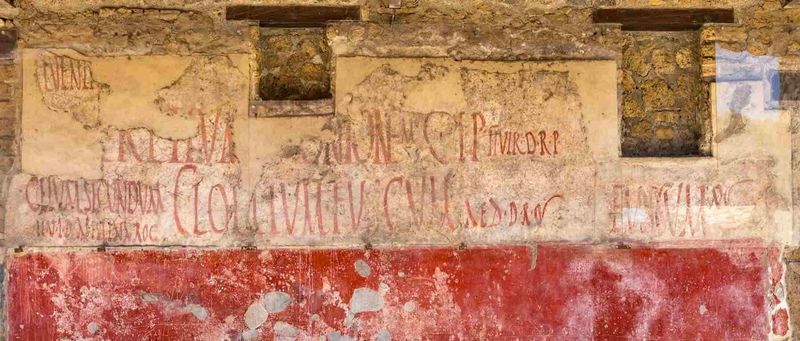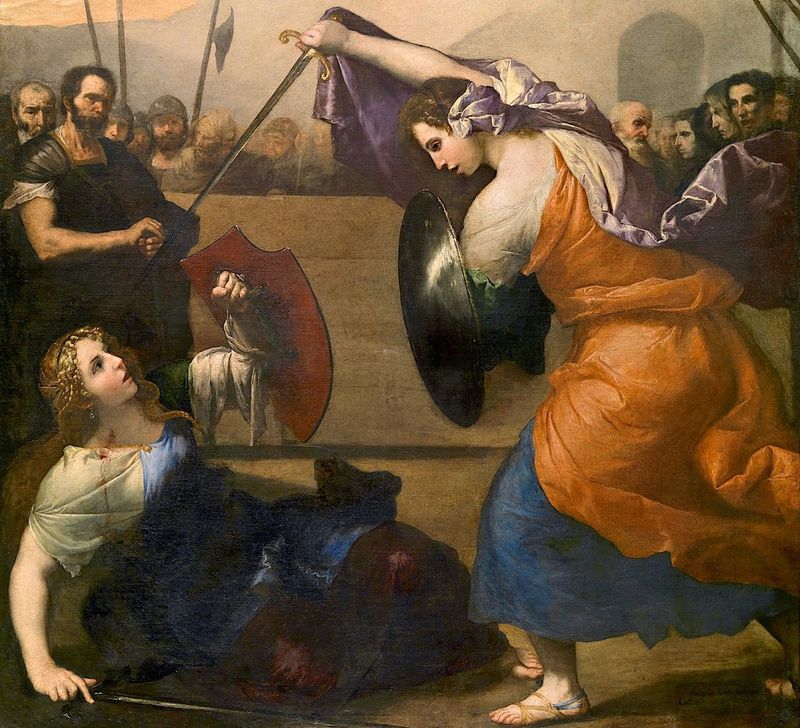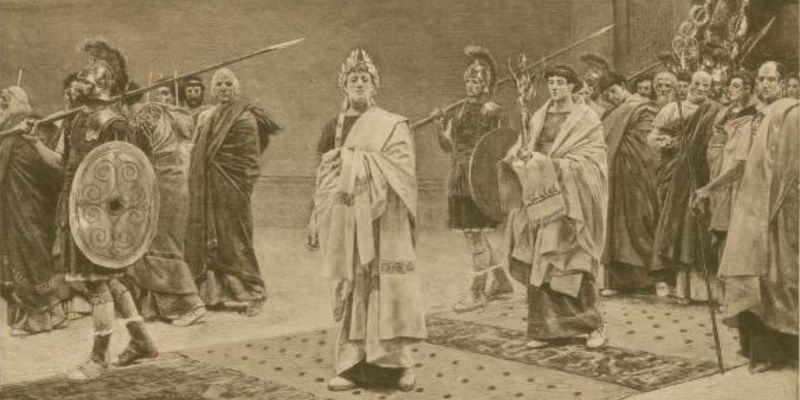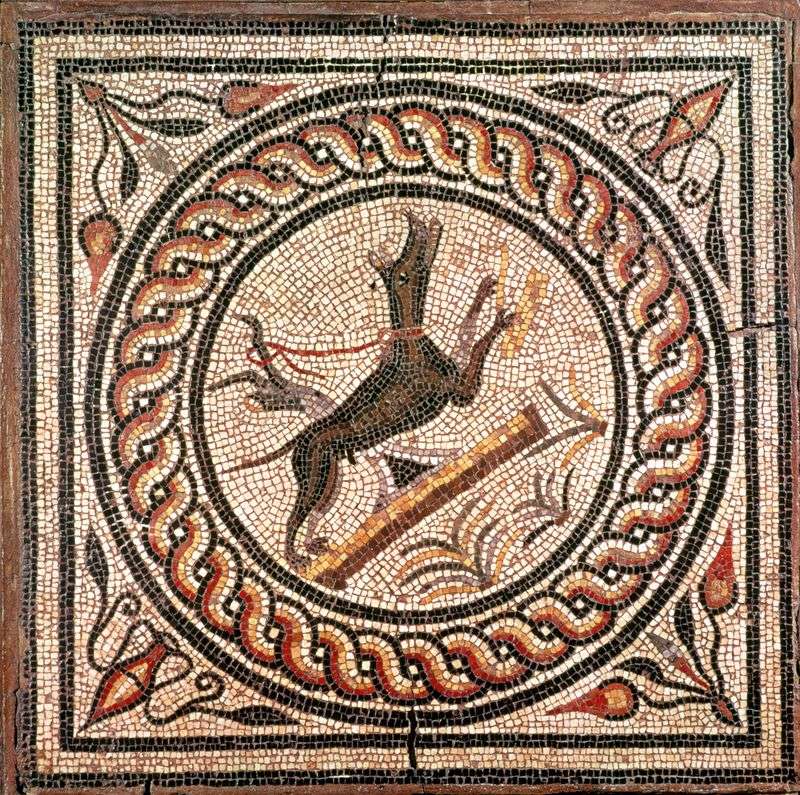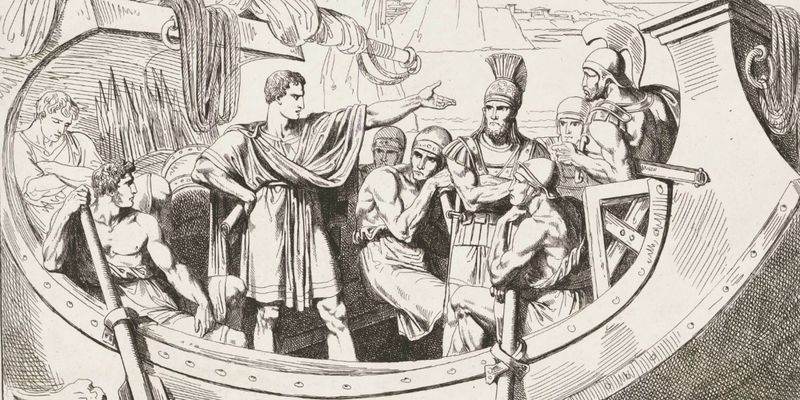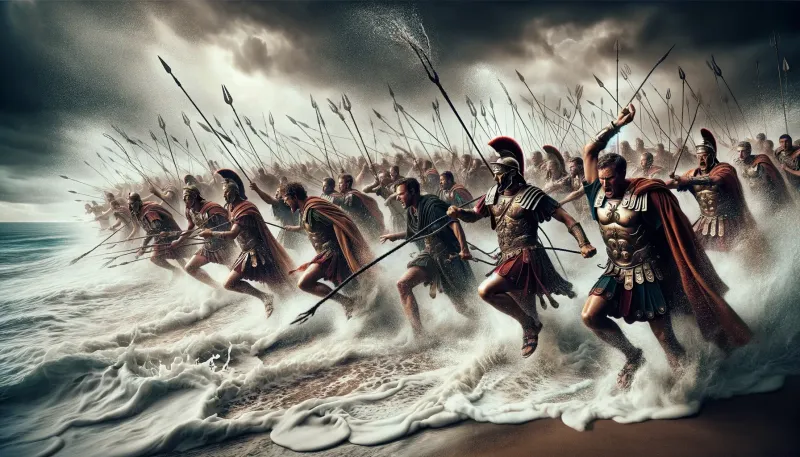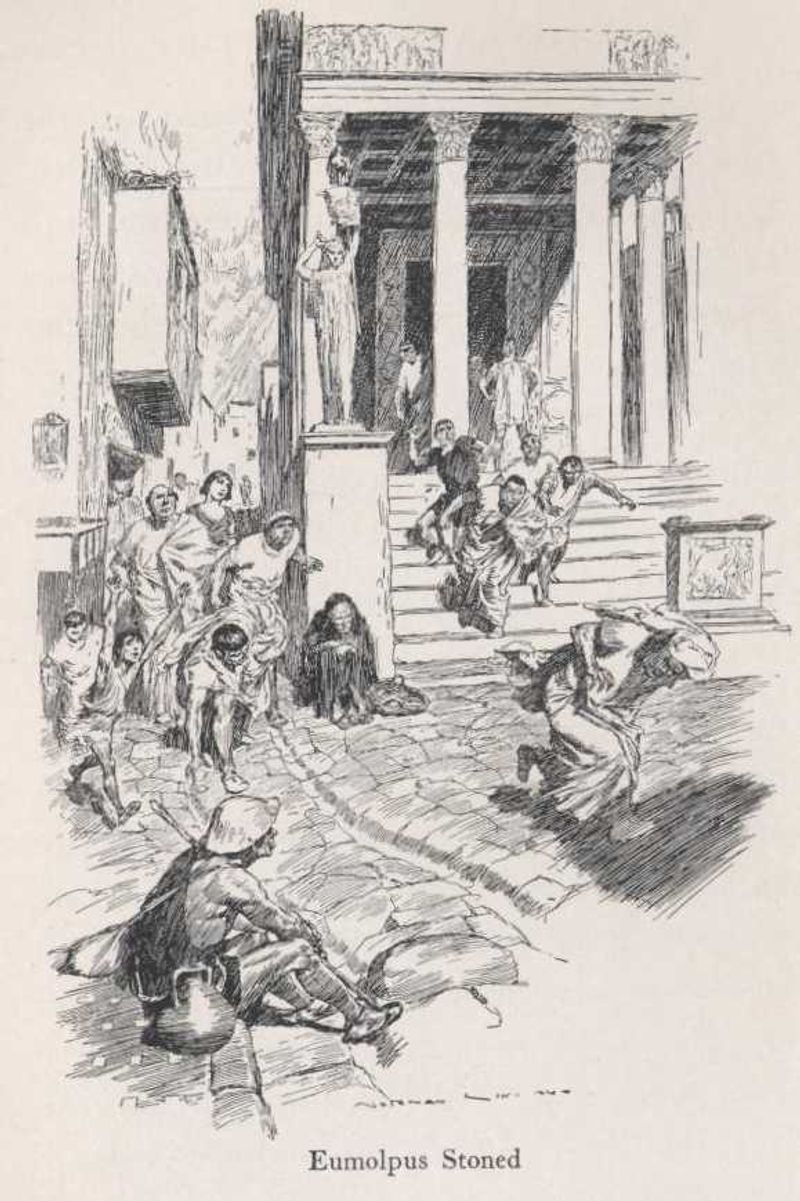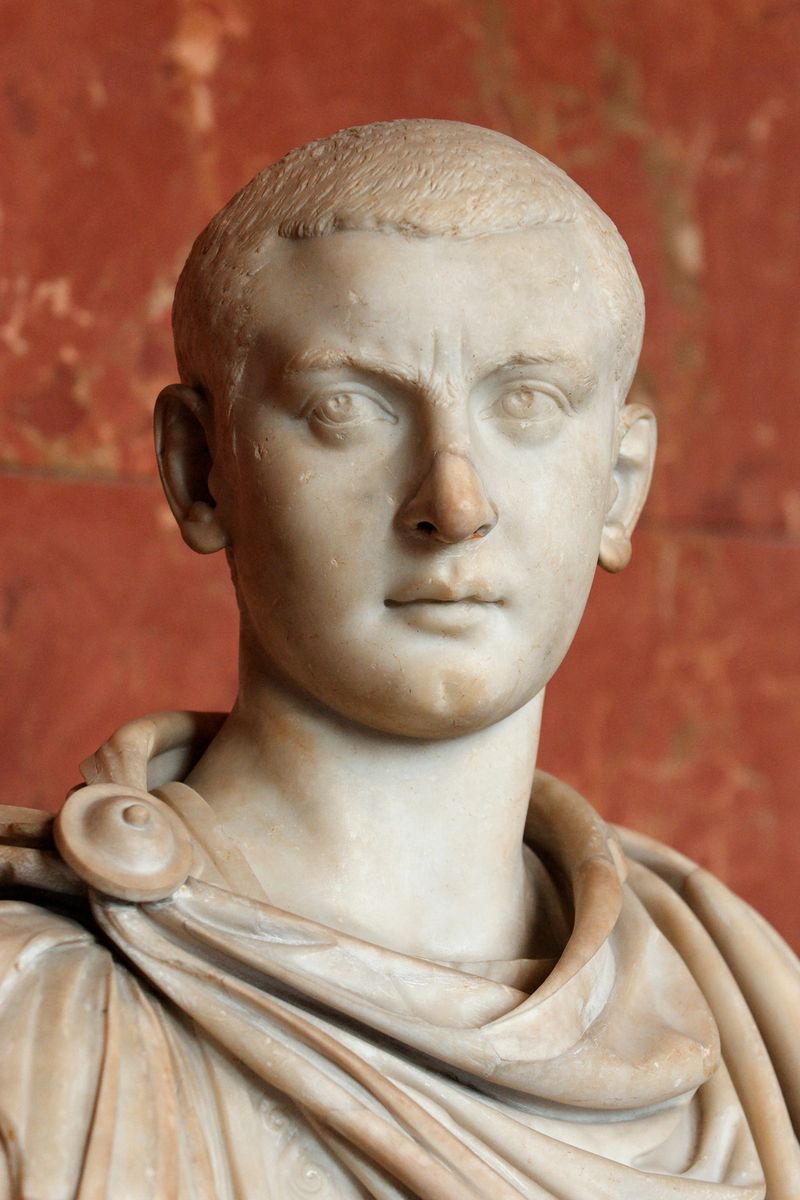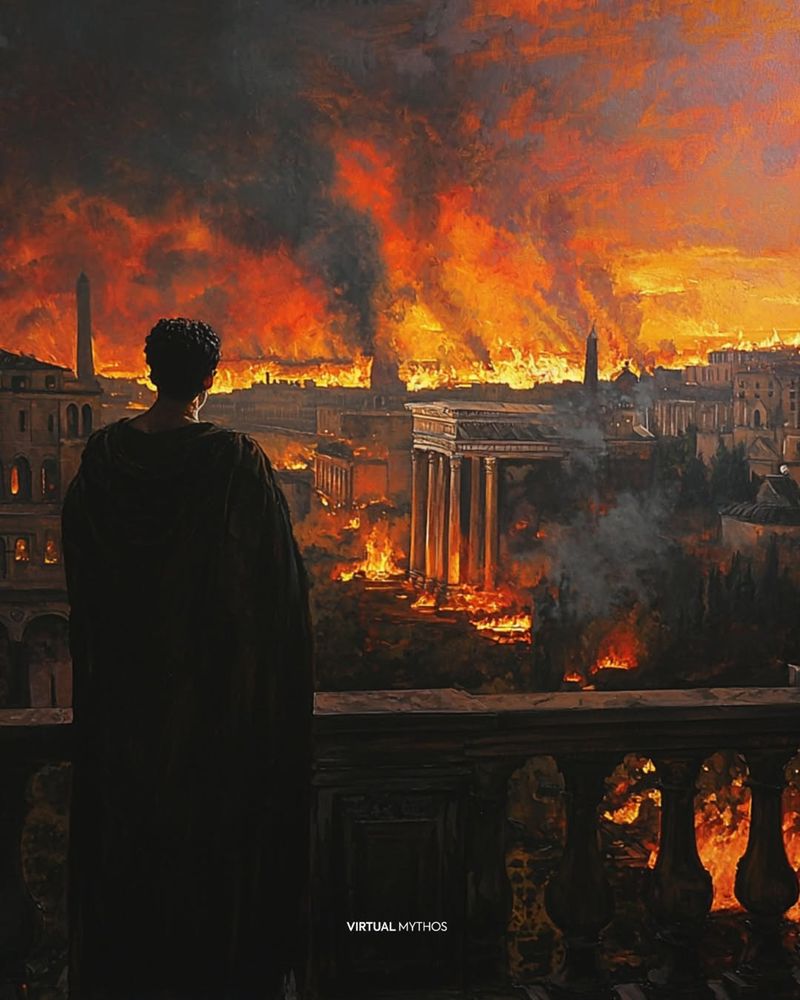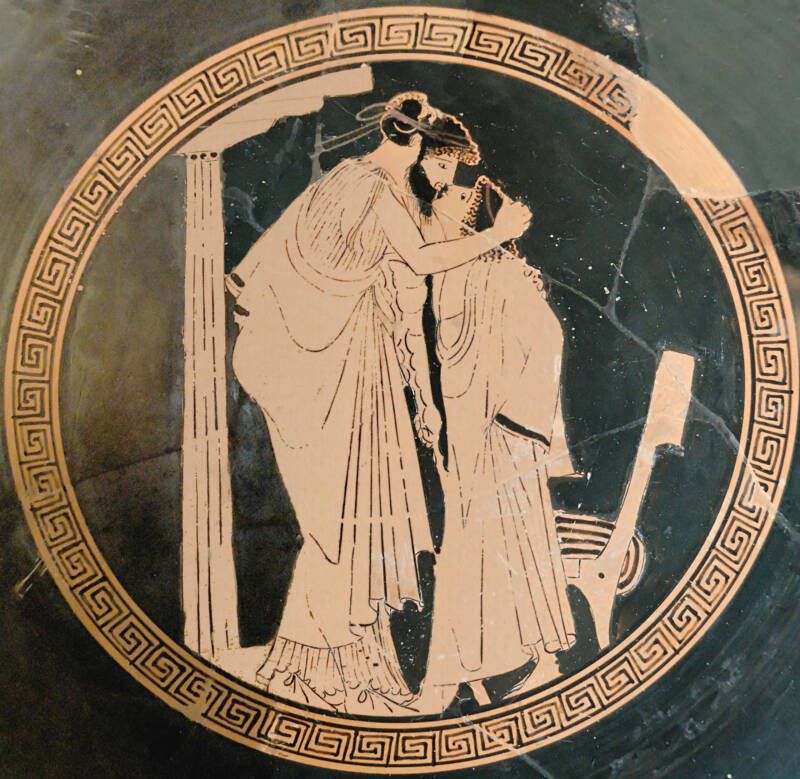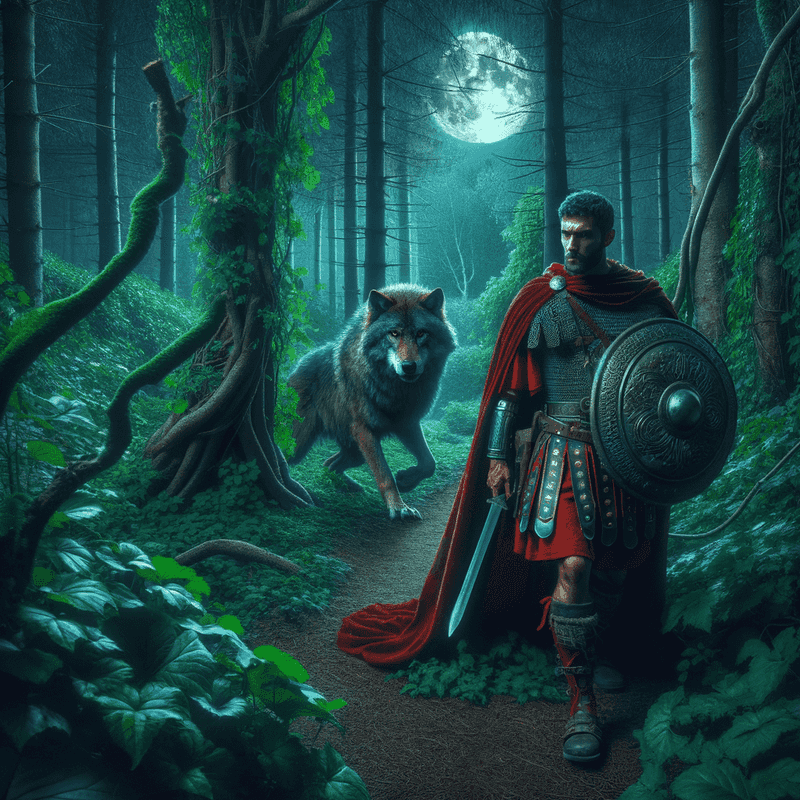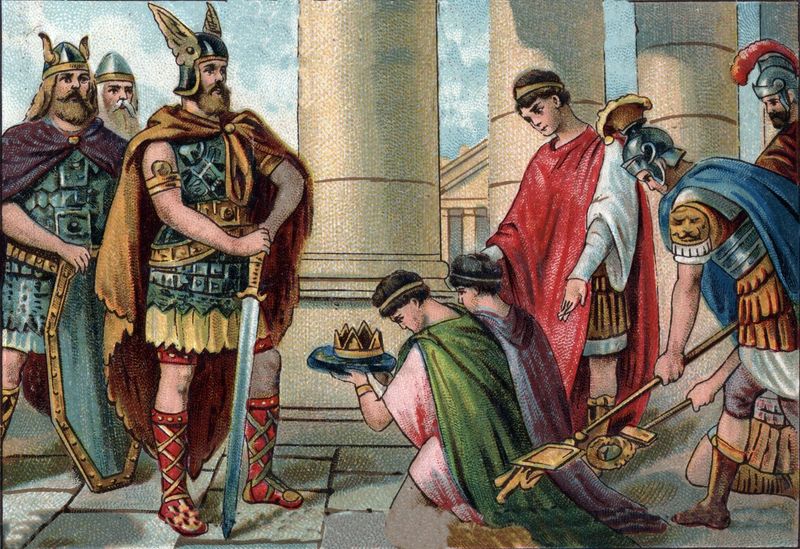Explore a collection of astonishing and lesser-known facts about the Roman Empire that challenge conventional historical narratives. From bizarre customs to intriguing tales of emperors and gladiators, these truths offer a fresh perspective on ancient Rome that historians often overlook.
1. The Roman Empire Had a Transgender Emperor
Emperor Elagabalus, who ruled from 218 to 222 AD, was an enigmatic figure known for their defiance of traditional gender norms. They openly wore makeup and preferred to be addressed as “Lady.” This behavior was unprecedented in Roman history, where masculinity was highly valued. Elagabalus even offered large sums of money to any doctor who could perform surgery to give them female anatomy. This quest for personal identity in a rigid society makes their story both fascinating and poignant. Despite their short reign, Elagabalus left an indelible mark on the Roman Empire’s history.
2. Gladiators Were Mostly Vegetarian
In a surprising contradiction to their brutal profession, many Roman gladiators followed a vegetarian diet. Bone analysis from ancient remains reveals that they consumed a staple diet of barley and beans. This plant-based diet helped them build the necessary bulk for combat without relying on meat. The choice of food parallels some modern-day vegan athletes who thrive on plant-based nutrition. Gladiators, often seen as fierce warriors, led a lifestyle that was unexpectedly aligned with principles of vegetarianism. Their diet contributed not only to their strength but also to the mythos surrounding their legendary status.
3. Romans Drank Gladiator Blood as Medicine
In ancient Rome, the belief in the medicinal properties of gladiator blood was widespread. After battles, spectators would rush to collect the blood of fallen gladiators, hoping it would cure ailments like epilepsy and increase vitality. This practice reflects the era’s unique blend of superstition and medical experimentation. The act of consuming blood symbolized a connection to the perceived power and strength of these revered warriors. While modern medicine dismisses such practices, this belief underscores the lengths to which Romans went in their pursuit of health and longevity, weaving a complex tapestry of ancient medical traditions.
4. Caesar Was Kidnapped by Pirates… Then Crucified Them
Julius Caesar’s encounter with pirates is a tale of audacity and retribution. At just 25, he was captured by pirates who demanded a hefty ransom for his release. Displaying audacious confidence, Caesar treated his captors with disdain, even insisting they raise the ransom amount. Upon his release, he assembled a fleet, hunted down the pirates, and had them crucified. In a display of unexpected mercy, he ordered their throats to be slit before crucifixion. This episode illustrates Caesar’s unyielding resolve and strategic mind, characteristics that would later define his illustrious career in Roman politics and military conquest.
5. The Roman Army Had a “Decimation” Punishment
Decimation was a brutal punishment used by the Roman Army to enforce discipline. If a legion mutinied or fled from battle, one in every ten men was chosen by lot to be beaten to death by their comrades. This harsh method served as a deterrent to insubordination, ensuring compliance through fear. Despite its severity, decimation was not frequently employed, as it risked lowering morale. However, the mere threat of such punishment reinforced the importance of unity and obedience among the troops. The practice of decimation offers insight into the strict military code that underpinned Rome’s formidable army.
6. Nero May Have Performed on Stage… Badly
Emperor Nero’s passion for performance is infamous. Known for his artistic pursuits, Nero often forced audiences to endure his singing and acting. Guards blocked exits to prevent anyone from leaving early. Despite his artistic ambitions, Nero’s talent was questionable, and his performances were more dreaded than admired. This obsession with being on stage reflects a ruler whose desires often overruled public sentiment. Nero’s insistence on performing, regardless of skill, reveals a complex personality driven by a need for approval and validation. His pursuits in the arts, though largely unloved, remain a notable aspect of his controversial reign.
7. Romans Used Urine as Mouthwash
In Roman times, urine was a surprisingly valued commodity, especially for its ammonia content. It was used as a mouthwash to whiten teeth, a practice that seems unorthodox by modern standards. Collected from public toilets, the ammonia in urine acted as a cleansing agent. This peculiar hygiene ritual highlights the innovative, albeit unconventional, approaches to personal care in ancient Rome. Beyond dental hygiene, urine had multiple applications in Roman daily life, including laundering clothes. Such practices underscore the resourcefulness of Romans, who found utility in substances that might otherwise be dismissed as waste.
8. The Colosseum Was Sometimes Flooded for Naval Battles
One of the most remarkable spectacles in ancient Rome was the staging of mock naval battles, known as naumachiae, in the Colosseum. Ingeniously engineered, the arena could be flooded with water to accommodate these events. Real ships were used, and participants reenacted famous sea battles to entertain the Roman populace. These elaborate performances showcased Roman engineering prowess and provided thrilling entertainment. The ability to transform the Colosseum’s arena into a temporary lake illustrates the ingenuity and spectacle-driven culture of imperial Rome. Such events were not only a testament to Roman capabilities but also a reflection of their grandiose public entertainments.
9. There Was a Roman Emperor Who Ruled for Only 3 Months… and Did Nothing
Emperor Didius Julianus’s brief reign is a tale of political folly. He gained the throne in 193 AD through an auction held by the Praetorian Guard, outbidding rivals with promises of wealth. However, his rule lasted only three months, marked by indulgence rather than governance. Julianus spent his time feasting, ignoring the pressing needs of the empire. His lack of leadership led to his swift assassination, ending a reign characterized by extravagance and inertia. Julianus’s story serves as a cautionary tale of the perils of power obtained through corruption, highlighting the volatility of Roman imperial politics.
10. The Vestal Virgins Were Buried Alive If They Had Sex
The Vestal Virgins, priestesses of Vesta, served a critical religious role in ancient Rome, tasked with maintaining the sacred fire. Sworn to celibacy for 30 years, breaking their vow was met with a grim fate. Those found guilty were buried alive, a punishment intended to avoid shedding their blood. This practice underscores the high stakes of their vows and the societal expectations placed on them. The Vestal Virgins’ chastity symbolized Rome’s purity and stability. While their role was revered, the harsh penalties they faced reflect the strict moral codes of Roman society and the reverence for their sacred duties.
11. Romans Invented the First Vending Machine
Hero of Alexandria, an ancient Greek engineer, is credited with creating the first vending machine. Developed in the first century, it was designed to dispense holy water in exchange for a coin. When a coin was inserted, it tipped a balance, allowing water to flow until the coin fell off. This innovation marked a remarkable step in automating transactions. The concept of a vending machine in such an early period illustrates the ingenuity and forward-thinking of ancient engineers. Hero’s invention reflects the blending of practical needs with religious practices, showcasing the creative spirit of the time.
12. Caligula Made His Horse a Senator
Emperor Caligula’s eccentricity knew no bounds. Among his most notorious acts was appointing his horse, Incitatus, as a senator. This symbolic gesture of disdain towards the Roman Senate highlighted Caligula’s contempt for traditional political structures. He lavished Incitatus with luxuries, including a marble stable and jeweled collars. Though some historians argue this act was more satire than sincerity, it remains emblematic of Caligula’s unpredictable reign. The tale of Incitatus serves as a reminder of the complex interplay between power and madness in the Roman Empire, where the line between reality and absurdity often blurred in the pursuit of imperial dominance.
13. Rome Had a Secret Police Force (The Frumentarii)
The frumentarii began as grain collectors but evolved into a formidable secret police force during the Roman Empire. Tasked with espionage and political assassination, they operated discreetly under the guise of ordinary citizens. Their dual role as both spies and enforcers allowed emperors to maintain control over political rivals and potential threats. The frumentarii’s covert activities contributed to an atmosphere of suspicion and distrust within Roman society. This secretive network underscores the lengths to which emperors would go to secure their power. The frumentarii exemplify the intricate and often shadowy mechanisms of Roman governance.
14. The Empire’s Fall Was Partly Due to Lead Poisoning
The decline of the Roman Empire may have been hastened by lead poisoning. Romans used lead extensively in plumbing, cookware, and even wine production. This widespread use of lead exposed people, particularly the elite, to its toxic effects. Symptoms like insanity and infertility were common, potentially weakening the ruling class. While lead poisoning was not the sole cause of Rome’s fall, it likely exacerbated existing issues. The reliance on lead demonstrates a lack of awareness about health risks, contributing to the empire’s eventual decline. The story of lead in Rome serves as a cautionary tale about the unintended consequences of technological advancement.
15. Romans Wiped Their Butts with a Shared Sponge Stick
In ancient Rome, public hygiene practices were both communal and pragmatic. Public toilets featured a tersorium, a sponge attached to a stick, used for cleaning after defecation. Soaked in vinegar, the sponge was shared among users, reflecting a communal approach to sanitation. This practice might seem unsanitary today, but it highlights the Romans’ resourcefulness in addressing hygiene. Public baths and toilets were integral to social life, offering insights into Roman attitudes towards cleanliness and communal living. While modern sanitation has evolved significantly, the tersorium remains a fascinating aspect of daily life in ancient Rome.
16. The First Recorded Strike Was in Rome
In 494 BC, Rome witnessed what is considered the first recorded labor strike in history. The plebeians, Rome’s common citizens, walked out of the city, refusing to work or serve in the military. Their demands included debt relief and political representation. This mass protest, known as the Secession of the Plebs, resulted in the establishment of the Tribune of the Plebs, giving them a voice in government. This event marks a significant moment in the struggle for social justice, highlighting the persistent tension between Rome’s social classes. The plebeians’ strike set a precedent for labor movements throughout history.
17. Pompeii’s Walls Were Covered in Graffiti (Including Profanity)
The ancient city of Pompeii offers unique insights into Roman life, partly through its graffiti-covered walls. These inscriptions range from simple messages to explicit content, including insults and boasts about sexual conquests. The graffiti reveals candid snapshots of daily life, social interactions, and humor. Despite the passage of time, these writings connect us to the thoughts and personalities of Pompeii’s inhabitants. The presence of such graffiti challenges the notion of ancient societies as entirely decorous, showcasing the vibrant and sometimes vulgar expressions of individual voices. Pompeii’s walls serve as a lasting testament to the human spirit’s resilience and creativity.
18. Some Gladiators Were Women
In the Roman arena, the spectacle of gladiatorial combat was not limited to men. Female gladiators, known as gladiatrices, also fought for the entertainment of the masses. These women challenged traditional gender roles, displaying valor and skill in combat. Their participation, though limited, added diversity to the games and captivated audiences. However, these spectacles were eventually banned by Emperor Septimius Severus, who deemed them “degenerate.” The existence of female gladiators highlights the complexities of gender dynamics in ancient Rome, where women could defy societal norms and achieve a form of fame usually reserved for men.
19. Rome Had a Serial Killer Emperor
Emperor Commodus’s reign is marked by his notorious obsession with gladiatorial games. Unlike previous emperors, Commodus personally participated in the arena, fighting against gladiators and animals. His opponents were often disabled or weakened, ensuring his victory. Commodus’s desire to display his prowess in the arena blurred the lines between ruler and entertainer. His actions shocked the Roman elite, who saw such behavior as unbecoming of an emperor. Commodus’s self-indulgence and brutality contributed to the empire’s instability, reflecting a leader detached from reality. His reign remains a dark chapter in Roman history, characterized by excess and bloodshed.
20. The Empire Had a 3-Year Civil War Over a Throne Auction
The chaotic year of 193 AD saw the Roman Empire plunged into civil war following the murder of Emperor Pertinax. The Praetorian Guard, seeking profit, auctioned the throne to the highest bidder. This unprecedented event led to a period of turmoil known as the Year of the Five Emperors. Multiple claimants and shifting allegiances resulted in three years of conflict, destabilizing the empire. This tumultuous period underscores the volatility of Roman politics and the fragility of imperial power. The throne auction serves as a stark reminder of the corrupt practices that plagued the empire, contributing to its eventual decline.
21. Romans Crucified Dogs Every Year for “Failing” to Warn Them
Romans practiced an unusual and grim ritual involving the crucifixion of dogs. This annual ceremony was meant to atone for a historical event in which the sacred geese successfully warned Rome of a Gallic invasion while the dogs failed to bark. As a result, each year, in a macabre tradition, puppies were crucified to remind the populace of the dogs’ failure. This ritual highlights the Romans’ belief in symbolic acts of penance and their reliance on omens. The practice, unsettling by modern standards, reflects the complex interplay between religion and superstition that permeated Roman society.
22. Caesar Was Almost Killed by a Pirate… During His Kidnapping
Julius Caesar’s captivity by pirates is not only a tale of kidnapping but also of near-comic bravado. While held for ransom, Caesar maintained an air of superiority, even reciting poetry to his captors. His confidence and threats amused the pirates, who underestimated his resolve. After his release, Caesar’s promise to crucify the pirates was fulfilled, marking a ruthless end to the episode. This encounter illustrates Caesar’s charisma and strategic brilliance, traits that would define his rise to power. His experience with the pirates is a testament to his indomitable spirit and unyielding pursuit of vengeance.
23. Rome’s Greatest Enemy (Hannibal) Used “Poison Snakes” in Battle
Hannibal Barca, renowned for his military genius, employed an unconventional tactic during a naval battle against Rome. He ordered his forces to catapult jars filled with venomous snakes onto enemy ships, creating chaos and fear among Roman sailors. This inventive use of biological warfare highlights Hannibal’s adaptability and resourcefulness. His ability to surprise and unsettle his opponents contributed to his reputation as one of Rome’s most formidable adversaries. Although ultimately defeated, Hannibal’s tactics left a lasting impression on military strategy. His use of “poison snakes” exemplifies the innovative and daring approaches that defined his campaigns.
24. The Roman Senate Once Declared War on the Ocean
In an episode that borders on the absurd, Emperor Caligula once declared war on the ocean. After a storm destroyed his bridge across the Bay of Baiae, Caligula ordered his soldiers to march to the shore and attack the sea. Armed with swords, they “fought” the waves, collecting seashells as spoils of war. This bizarre display reflects Caligula’s volatile nature and his penchant for grandiose spectacles. By declaring war on an inanimate force, Caligula demonstrated his detachment from reality, highlighting the eccentricities that characterized his reign. The event remains an infamous example of the emperor’s unpredictable and erratic behavior.
25. Emperors Drank “Pearl & Gladiator Liver” Elixirs for Power
In their quest for power and immortality, Roman emperors indulged in peculiar concoctions. One such elixir combined powdered pearls and gladiator liver, believed to bestow strength and vitality. This blend of luxury and superstition underscores the lengths to which emperors went to maintain their rule. The consumption of such potions reflects a fascination with alchemy and the mystical properties ascribed to rare ingredients. Roman curiosity and desire for eternal life led to the creation of elaborate and often bizarre remedies. The use of pearl and gladiator liver elixirs exemplifies the opulence and eccentricity of Roman imperial culture.
26. The Empire Had a 5-Year-Old Emperor
In the tumultuous landscape of Roman politics, young Gordian III ascended to the throne at the tender age of 13. However, it was his predecessor, Severus Alexander, who holds the record as the youngest full emperor, taking power at just 14. The youthfulness of these rulers highlights the sometimes precarious nature of imperial succession. Advisors and regents often wielded real power during their reigns, navigating political intrigue. The appointment of child emperors underscores the empire’s vulnerability and the influence of those behind the throne. This historical quirk reflects the complexities of leadership and governance in ancient Rome.
27. Rome’s Biggest Fire Was Likely Arson (But Christians Were Blamed)
The Great Fire of Rome in 64 AD devastated much of the city, leaving historians to speculate about its origins. While Emperor Nero is often accused of instigating the blaze, evidence remains inconclusive. To deflect blame, Nero targeted Christians, subjecting them to horrific punishments. The fire’s aftermath fueled tensions between the burgeoning Christian community and traditional Roman society. This event illustrates the complexities of historical narratives, where truth and propaganda intertwine. Nero’s role in the fire remains a contentious topic, highlighting the precarious nature of power and the scapegoating tactics employed in times of crisis.
28. The First Gay Marriage Was Recorded in Rome
Emperor Nero, known for his unconventional lifestyle, is credited with performing the first recorded gay marriage in history. He publicly married two men, taking on the role of the bride in one ceremony. These events challenged traditional Roman values, reflecting Nero’s defiance of societal norms. While these unions were symbolic rather than legally recognized, they illustrate the fluidity of gender and sexuality in ancient Rome. Nero’s marriages remain a testament to his eccentric rule and the diverse cultural landscape of the empire. This aspect of Nero’s life offers a glimpse into the complexities of identity and acceptance in Roman society.
29. Romans Believed in Werewolves & Vampires
Roman folklore abounded with tales of supernatural creatures, including werewolves and vampires. Pliny the Elder wrote about men transforming into wolves, and some graves were staked to prevent the dead from rising. These beliefs reflect the rich tapestry of myth and legend that permeated Roman culture. Such stories provided explanations for unexplained phenomena, revealing humanity’s enduring fascination with the unknown. The presence of werewolves and vampires in Roman lore demonstrates the blending of cultural influences and the persistence of supernatural narratives. These mythical creatures continue to captivate imaginations, illustrating the timeless allure of the mystical and mysterious.
30. The Empire’s Last Words Were in Greek, Not Latin
The fall of the Western Roman Empire in 476 AD marked the end of an era. The last emperor, Romulus Augustulus, was deposed by the Germanic chieftain Odoacer. Interestingly, Romulus’s final words were reportedly in Greek, not Latin, symbolizing the shift in cultural and political power. This linguistic choice reflects the influence of the Eastern Roman Empire, or Byzantine Empire, which continued to thrive. The end of Rome’s dominance serves as a poignant moment in history, signaling the transition from antiquity to the medieval period. Romulus’s demotion underscores the fragility of empires and the inevitable march of change.
31. The Vatican Hides Some of Rome’s Darkest Secrets
Rumors persist that the Vatican holds some of ancient Rome’s most clandestine records. These archives are said to contain evidence of mass human sacrifices and lost pagan rituals. The secrecy surrounding these documents fuels speculation about the darker aspects of Roman history. While much of this remains the stuff of legend, the Vatican’s historical role in shaping narratives cannot be discounted. The idea of hidden truths locked away excites the imagination, inviting scholars and conspiracy theorists alike to ponder what lies hidden. The Vatican’s archives symbolize the enduring mystery and allure of ancient Rome’s untold stories.
